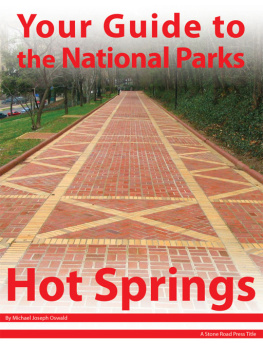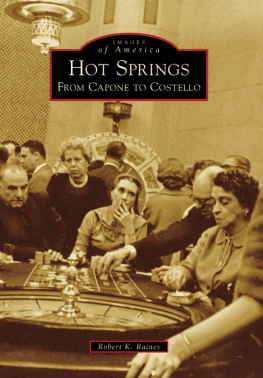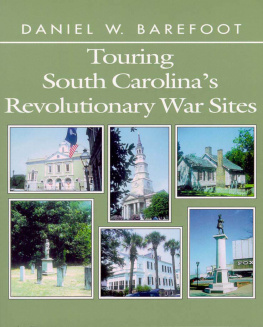TOURING
NEW MEXICO
HOT SPRINGS
Help Us Keep This Guide Up to Date
Every effort has been made by the author and editors to make this guide as accurate and useful as possible. However, many things can change after a guide is publishedtrails are rerouted, regulations change, facilities come under new management, and so forth.
We would love to hear from you concerning your experiences with this guide and how you feel it could be improved and kept up to date. While we may not be able to respond to all comments and suggestions, well take them to heart and well also make certain to share them with the author. Please send your comments and suggestions to the following address:
The Globe Pequot Press
Reader Response/Editorial Department
P.O. Box 480
Guilford, CT 06437
Or you may e-mail us at:
editorial@GlobePequot.com
Thanks for your input, and happy travels!
Copyright 2008 Morris Book Publishing, LLC
Previously published by Falcon Publishing, Inc.
ALL RIGHTS RESERVED. No part of this book may be reproduced or transmitted in any form by any means, electronic or mechanical, including photocopying and recording, or by any information storage and retrieval system, except as may be expressly permitted in writing from the publisher. Requests for permission should be addressed to The Globe Pequot Press, Attn: Rights and Permissions Department, P.O. Box 480, Guilford CT 06437.
FalconGuides is an imprint of The Globe Pequot Press.
Falcon and FalconGuides are registered trademarks of Morris Book Publishing, LLC.
Photos by Matt C. Bischoff unless otherwise indicated.
Maps by Marc Italia Morris Book Publishing, LLC
Library of Congress Cataloging-in-Publication Data
Bischoff, Matt C.
Touring New Mexico hot springs / Matt Bischoff.2nd ed.
p. cm.
ISBN-13: 978-0-7627-4582-1
1. Hot springsNew MexicoGuidebooks. 2. New MexicoGuidebooks. I. Title.
GB1198.3.N6B57 2008
551.2309789dc22
2007049928
Printed in the United States of America
10 9 8 7 6 5 4 3 2 1
The author and The Globe Pequot Press assume no liability for accidents happening to, or injuries sustained by, readers who engage in the activities described in this book.
INTRODUCTION
Hot Springs in History
Hot springs have held a central place in numerous cultures throughout time. Prehistorically, hot springs were used for bathing and food preparation, and likely held spiritual meaning to many diverse groups. According to archaeological evidence, balneologythe utilization of natural mineral waters for the treatment of diseasehas been practiced for more than 5,000 years. Hot springs have been used in religious rites and ceremonies in both Egypt and the Middle East for thousands of years.
Hot Springs in Europe
According to English legend, Prince Bladud (who was to become the father of King Lear) contracted leprosy at a young age and was banished from his fathers kingdom. Forced to eke a living from herding swine, the pigs themselves contracted the princes disease. As the legend goes, one day the pigs were wallowing in hot spring water on the banks of a river and miraculously emerged cured of their disease. Noticing this, the young prince also bathed in the water and also miraculously emerged healed. The story of this incredible cure spread rapidly, and the hot spring waters became a popular place to visit. Today we know of the site as Bath, England.
Several centuries following Prince Bladud, Roman soldiers visited the site and recuperated from their long campaigns in the hot spring water. Word of the springs spread across the Roman Empire, and Bath quickly developed as a resort town. Through the centuries people continued to believe in the curative powers of the waters at Bath. The Royal Mineral Water Hospital was established at Bath by the British parliament in 1739 and evolved into a therapeutic treatment center for a variety of ailments.
The Victorian era in Europe saw a great awakening in the interest in spas and hot spring waters, particularly in the medicinal benefits attributed to drinking of the waters, although bathing was still an important activity. A visit to a spa became a fashionable pastime for Europes wealthy, and centers of thermal waters that had earlier been exploited by the Romans were developed into elaborate resort-hotel complexes.
Hot Springs in America
In the mid-nineteenth century, the popularity of hot spring resorts spread from Europe to America. Berkeley Springs in West Virginia, one of the earliest popular spas in North America, was originally named Bath in honor of the spa in England. Like most hot springs in North America, Native Americans had used the Berkeley Springs long before the arrival of the Europeans; various tribes used the springs as a kind of neutral ground, where peaceful meetings could be held. The British colonials themselves used Berkeley Springs as meeting places, and continued to believe in their therapeutic value.
New hot springs were discovered as the American people began moving west, and by 1888 there were 8,843 springs recorded in the United States. Of these springs, 634 were spas and 223 were sources of commercial mineral water for consumption. Hot spring popularity was particularly pronounced from the 1880s through the turn of the century. For years people had used the natural hot spring pools and ponds for therapy, but the Victorians desired a more civilized way of bathing. Resorts and spas became the answer, allowing for private and controlled bathing in the medicinal waters. Because of the lower population and lack of governmental support in America, however, these springs never became as extensive as their European counterparts.
The heyday for the establishment of spas and resorts at hot springs in the United States occurred in the early twentieth century, and remains at countless hot springs throughout the country attest to this boom time in commercial hot spring bathing. These resorts generally promised that their hot spring waters contained preventative and curative values. By this time, transportation had vastly improved in the American West, particularly in the form of the railroad, allowing people to visit places that would have been inaccessible otherwise. The hot spring resorts at Radium and Montezuma were both products of these developments.
The fashion waned by the outbreak of the First World War, but by that time all the major thermal areas of the eastern United States had been developed. In the American West, development of thermal waters was a lot less extensive due to the regions much smaller population density during the same period. Nevertheless, by the 1950s the boom in hot spring resorts had passed, and many closed down or were simply abandoned. Several of these resorts have never been reopened, but recently a renewed interest in hot springs has witnessed the reuse of previously abandoned springs, with varying results.
Today there are an estimated 1,800 hot springs in the United States, the majority of which are in the western portion of the country. Out of all the hot springs in America, approximately 115 have been developed into extensive resorts or spas.
Hot Springs in New Mexico
New Mexico, the Land of Enchantmentafter visiting the springs in this book, you will be hard-pressed to disagree with this title. New Mexico is also a land of extremes. From the low desert in the south to the pine-clad Rocky Mountains in the north, New Mexico has just about everything in between. The hot springs found in this book also range across the states geographic diversity. For the most part, however, the springs are concentrated in two main areas, the southwestern part of the state and the north-central portion.







